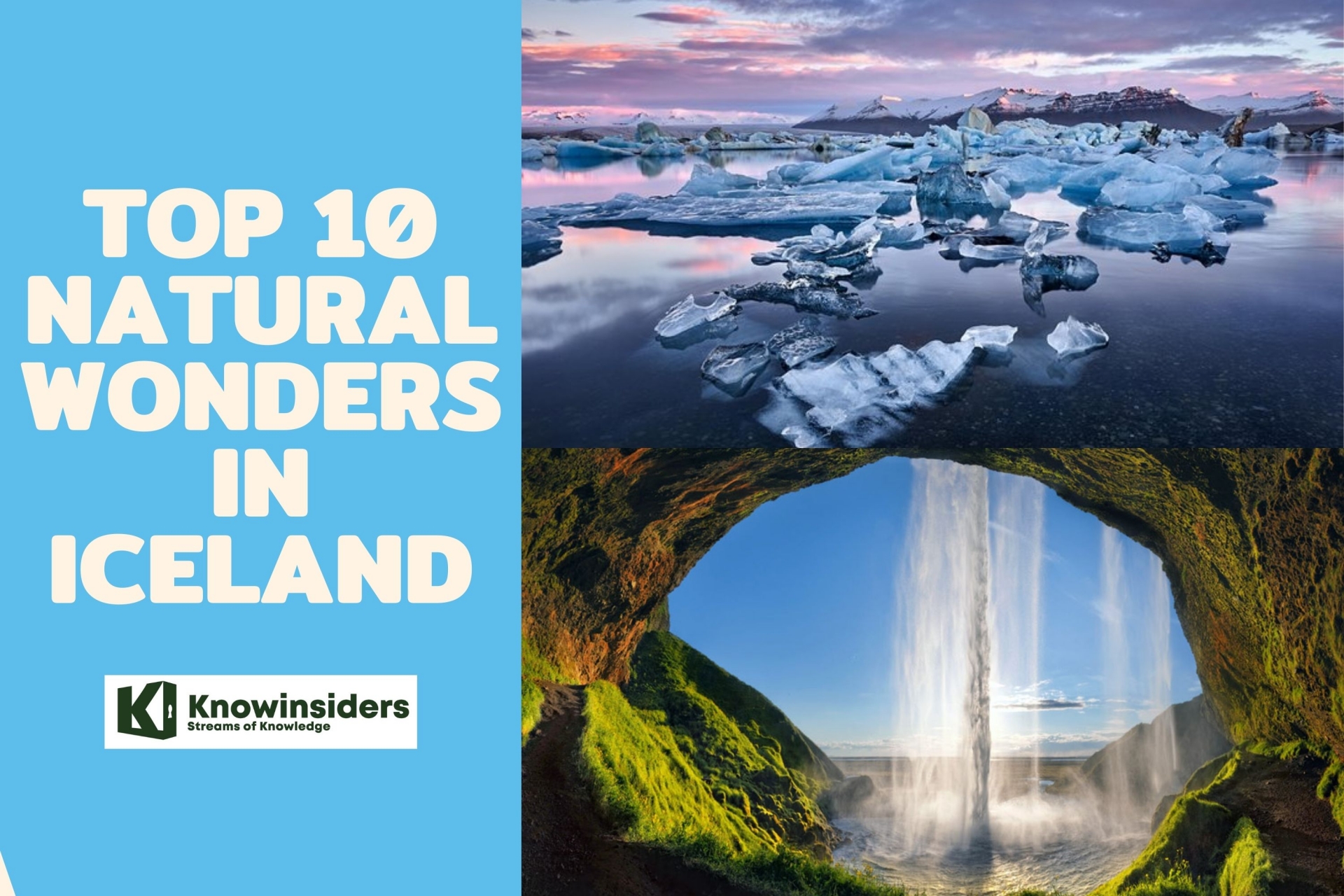What are the Natural Wonders of the UK Today - Top 11
| Contents |
Unexpectedly for some, the UK is home to some of the world's most fascinating and breathtaking natural wonders. The UK has it all, from serene lakes and untamed, rocky landscapes to charming parks full of an array of wildlife. There are many natural wonders that are sure to inspire, whether you are planning a vacation from abroad or this is your home country. Here are eleven of the best.
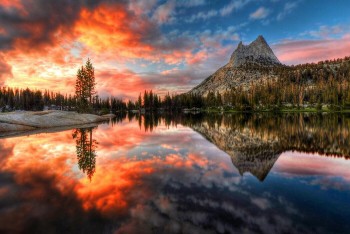 Top 10 Most Deadly Natural Wonders In The World Top 10 Most Deadly Natural Wonders In The World |
Which are the 11 Incredible Natural Wonders of Canada Today?
1. Giant’s Causeway
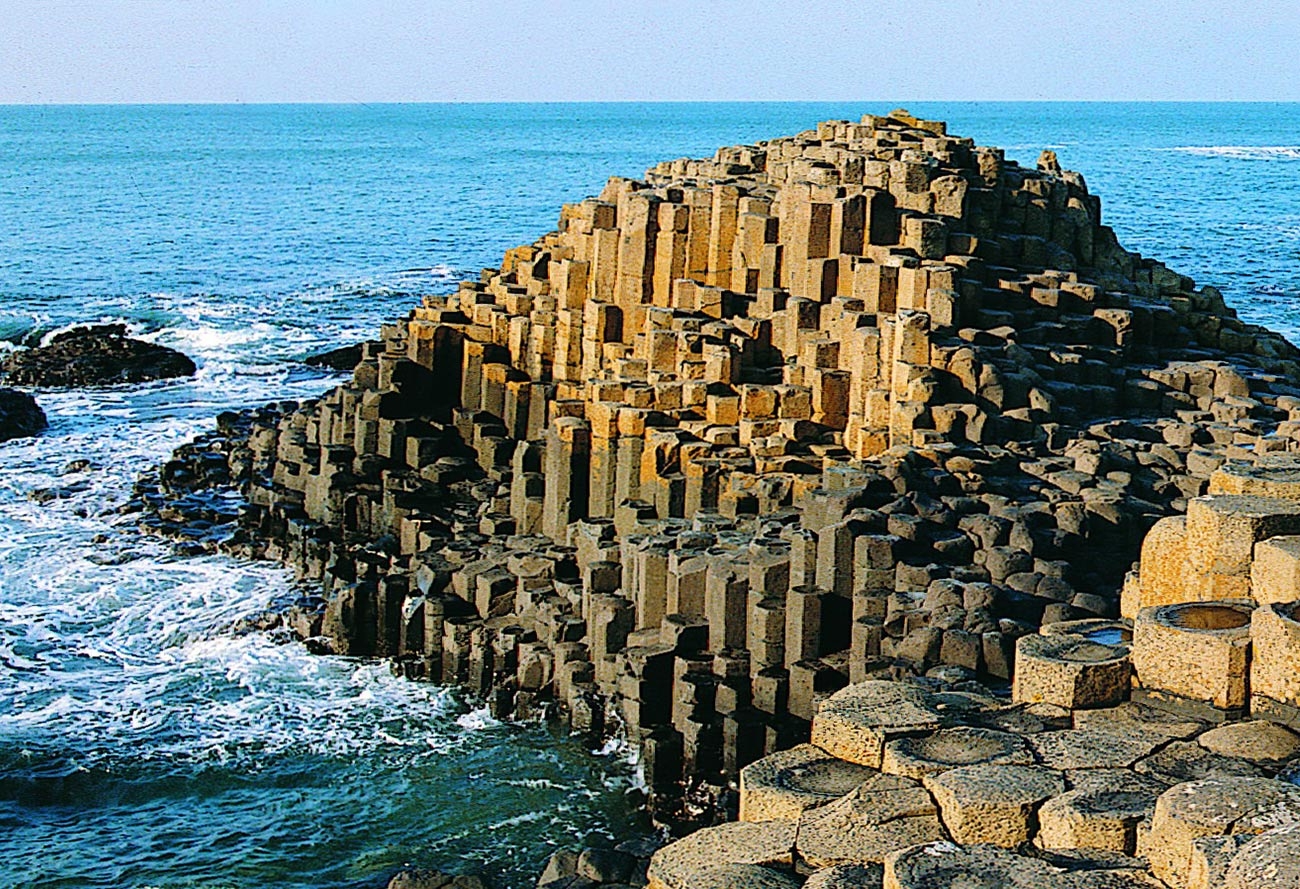 |
| The Giant’s Causeway |
There are about 40,000 interlocking basalt columns that make up the Giant's Causeway. This is one of the most well-known natural wonders in the United Kingdom and was designated as a UNESCO World Heritage Site in 1986.
The columns disappear beneath the sea, forming stepping stones that lead from the base of the cliff. Most of the columns' flat surfaces have four, five, seven, or eight sides, but most are hexagonal.
The thickest sections of the cliffs' solidified lava are 28 meters thick, and the tallest columns are about 12 meters high.
2. Gaping Gill, Yorkshire Dales, England
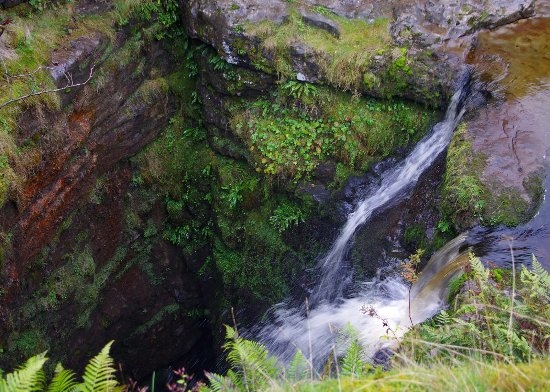 |
| Photo: TripAdvisor |
Gaping Gill, which is 100 meters below the Yorkshire Dales and dates back 300,000 million years, is a part of the longest cave system in Britain, spanning more than 40 miles. The stalagmites and stalactites of Gaping Gill, which is large enough to house St. Paul's Cathedral inside, are accessible twice a year when skilled cavers descend a cage to reveal the wonders below, which include a 350-foot waterfall.
Located on the brink of the Yorkshire Dales National Park, this underground wonder can be included in a lot of walks. Start at the neighboring towns of Ingleton or Clapham and enjoy the splendor of what many still refer to as God's Own Country.
3. Llechwedd Slate Caverns, Snowdonia, Wales
 |
| Photo: Visit Wales |
In the heart of Snowdonia, at Llechwedd Slate Caverns, social and cultural history meets natural history, though these days it's little more than a tourist attraction. During continental shifts 300-400 million years ago, mud with a high clay content was compacted and squeezed at high temperatures, creating some of the finest slate in the world. In the 19th century, the cavern at Llechwedd was a major industrial power.
Today, to appreciate the splendor of this natural phenomenon, you can ride Britain's steepest cable railway, which descends 660 feet underground. Take a hike through the untamed landscape of Snowdonia, which includes Glyder Fach and Glyder Fawr in addition to Snowdon itself.
4. Cader Idris, Snowdonia
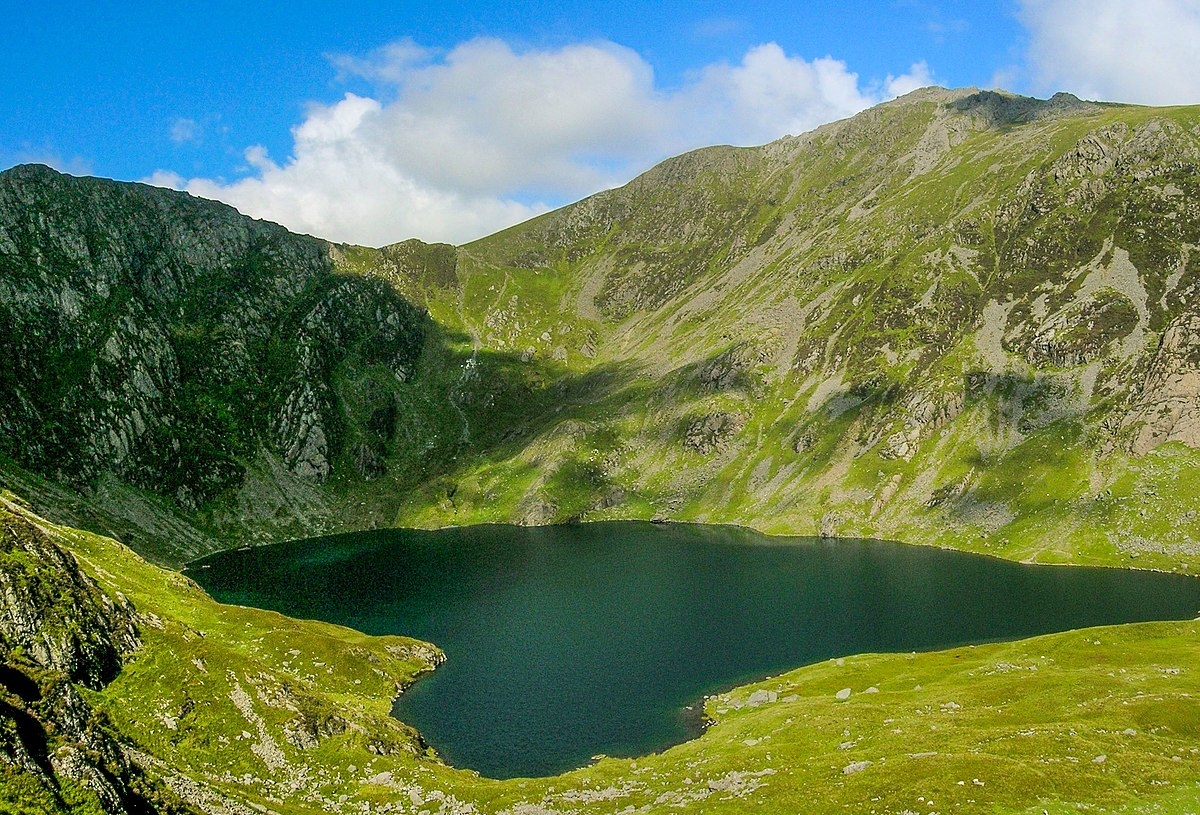 |
| Photo: - Wikipedia |
While there are many beautiful landscapes in Wales, none compare to Snowdonia's combination of craggy mountain peaks, valleys carved out by glaciers, winding ridges, and glistening lakes and rivers. The 893-meter-high Cader Idris Mountain bears the name of a giant named Idris, who is said to have sculpted the untamed terrain by hurling boulders at opponents.
Additionally, it is said to be the stomping ground of Gwyn ap Nudd, the Celtic underworld's lord, whose hounds' howling is a sign of impending disaster. It offers some of the most breathtaking hiking in Wales, with the many trails leading to the summit easily completed in a single day.
5. Scafell Pike and The Screes
 |
| Photo: Pinterest |
The Lake District in England was inducted as a UNESCO World Heritage site in July 2017. Its traditional sheep farming earned it the somewhat contentious designation, but that's not the reason we included it on the list.
Rather, its untamed, lonesome beauty and the diversity of its lakes and lakeland fells—a term the Vikings introduced to Britain for mountains—draw us in. From the stark drama of Scafell Pike, England's highest peak, and the Screes, seen here from Wastwater, to the elegant beauty of Lake Windermere, the country's largest natural lake and a resort since the railroad arrived in 1847.
The deepest lake in the Lake District is Wastwater, at 260 feet. The Screes stretch 2,000 feet up the southeast shore and consist of millions of broken stones left over from the last Ice Age, rising from the lake's bottom.
6. Kynance Cove
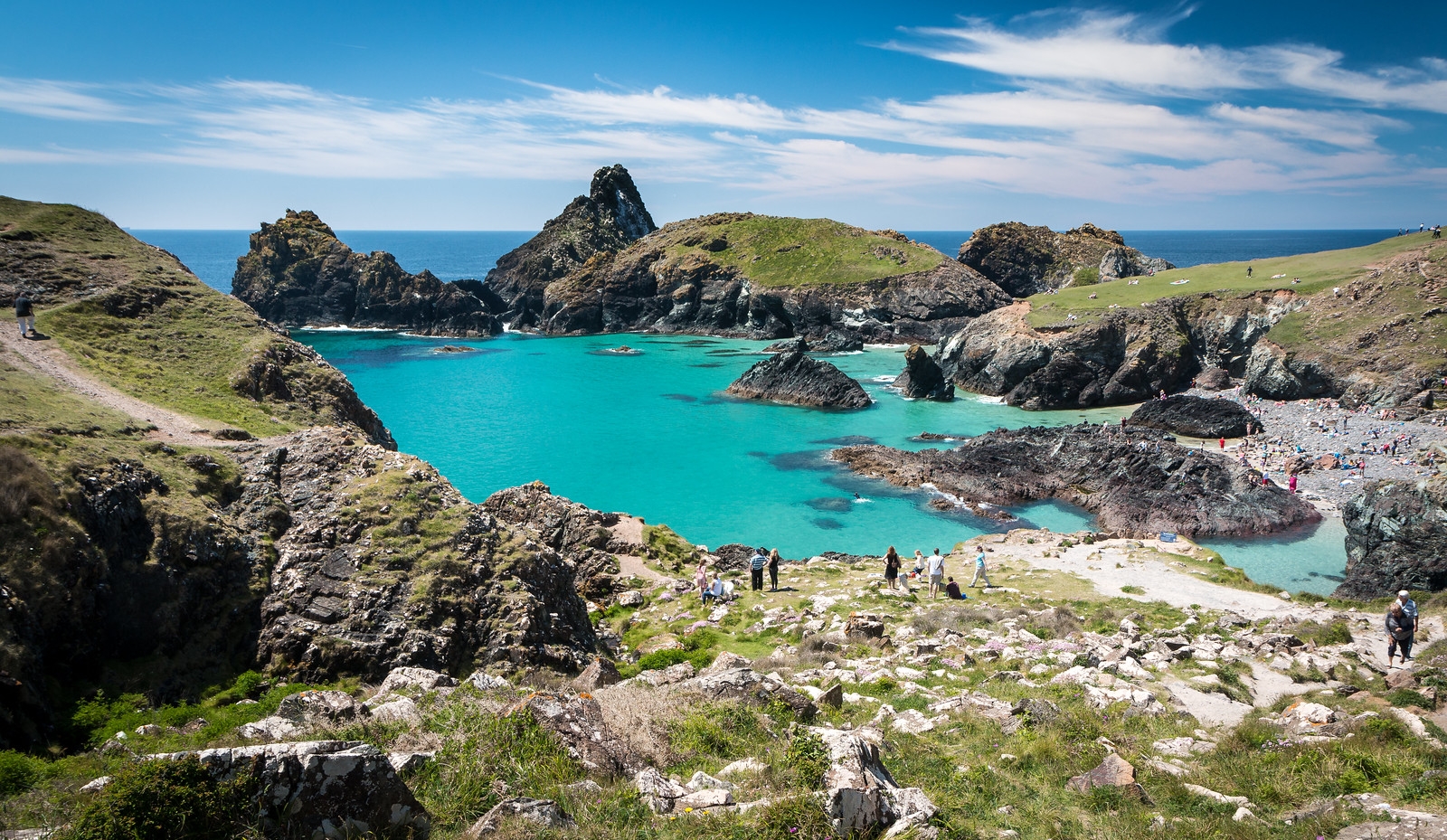 |
| Photo: UK Beach Guide |
If you've been engrossed in the most recent BBC production of Poldark, you've already been to Kynance Cove—at least virtually. The cove is Nampara, Poldark's white sand beach, with its massive rock towers, sea caves, and low tide islands.
The beach appears large and permanent as it does in the TV drama. However, the majority of it is only accessible and visible during low tide. It's a piece of mainland Britain's most southerly landmass, The Lizard. Often regarded as one of the most beautiful beaches in the world, it is well worth organizing your trip to coincide with the tides so that you can enjoy swimming in and seeing the breathtaking turquoise waters that are encircled by Cornish headlands.
The term "Kynance" originates from the ancient Cornish term "kewnans." The fact that it means ravine should help you understand why this beach is regarded as adventurous. More coves and caves that flood at high tide are revealed by a steeply sided stream that cuts through the open heathland or downs and opens out onto the beach.
The area around the cove, including the cliffs at The Lizard, are noted for wildlife watching, wildflowers and even wild asparagus. If you're lucky and watching from the cliff tops, you could spot enormous basking sharks in the clear turquoise waters. The second biggest fish in the ocean, they frequent the area in late spring and early summer.
7. Dartmoor
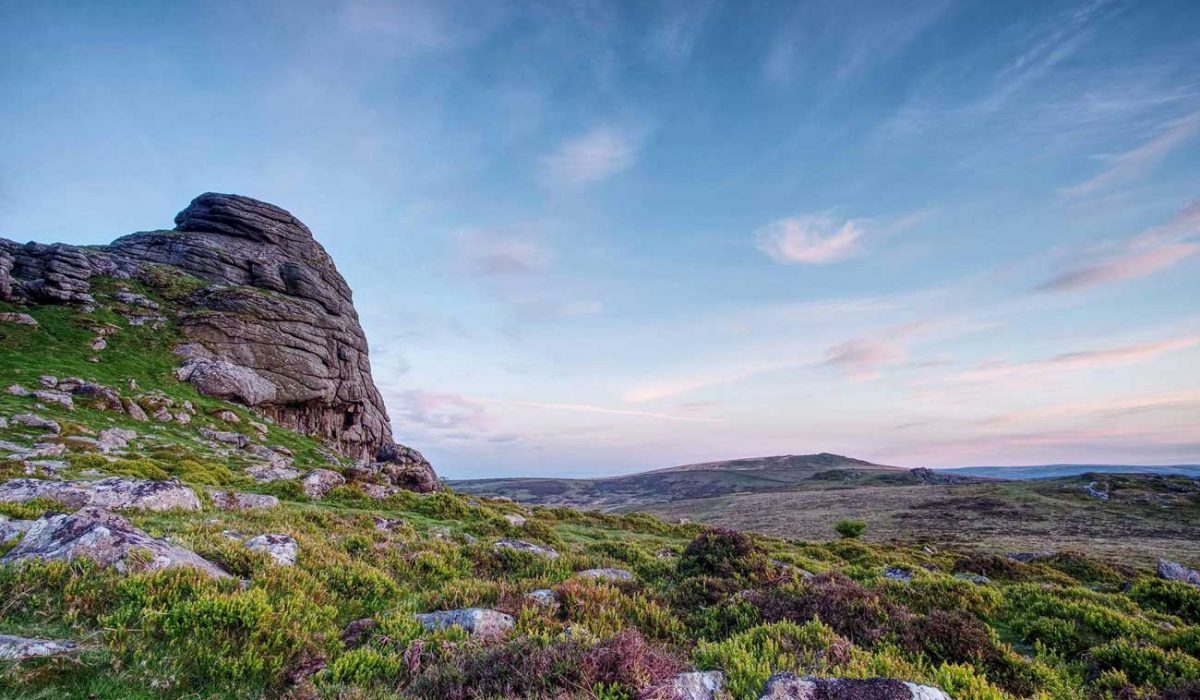 |
| Photo: Dartmoor |
With its honey-colored heaths, moss-covered boulders, tinkling streams, and eerie granite hills (known locally as tors), Devon's wild heart spans 368 sq miles and feels like it could be found in a Tolkien book.
Dartmoor is beautiful in the summertime, with sheep grazing by the side of the road and ponies roaming freely. However, you'll see why Dartmoor serves as the backdrop for Sir Arthur Conan Doyle's The Hound of the Baskervilles when sleeting rain and swirling mists arrive. The moor transforms into a desolate wilderness where ghost stories about a hound can seem remarkably real.
8. Cheddar Gorge, Somerset, England
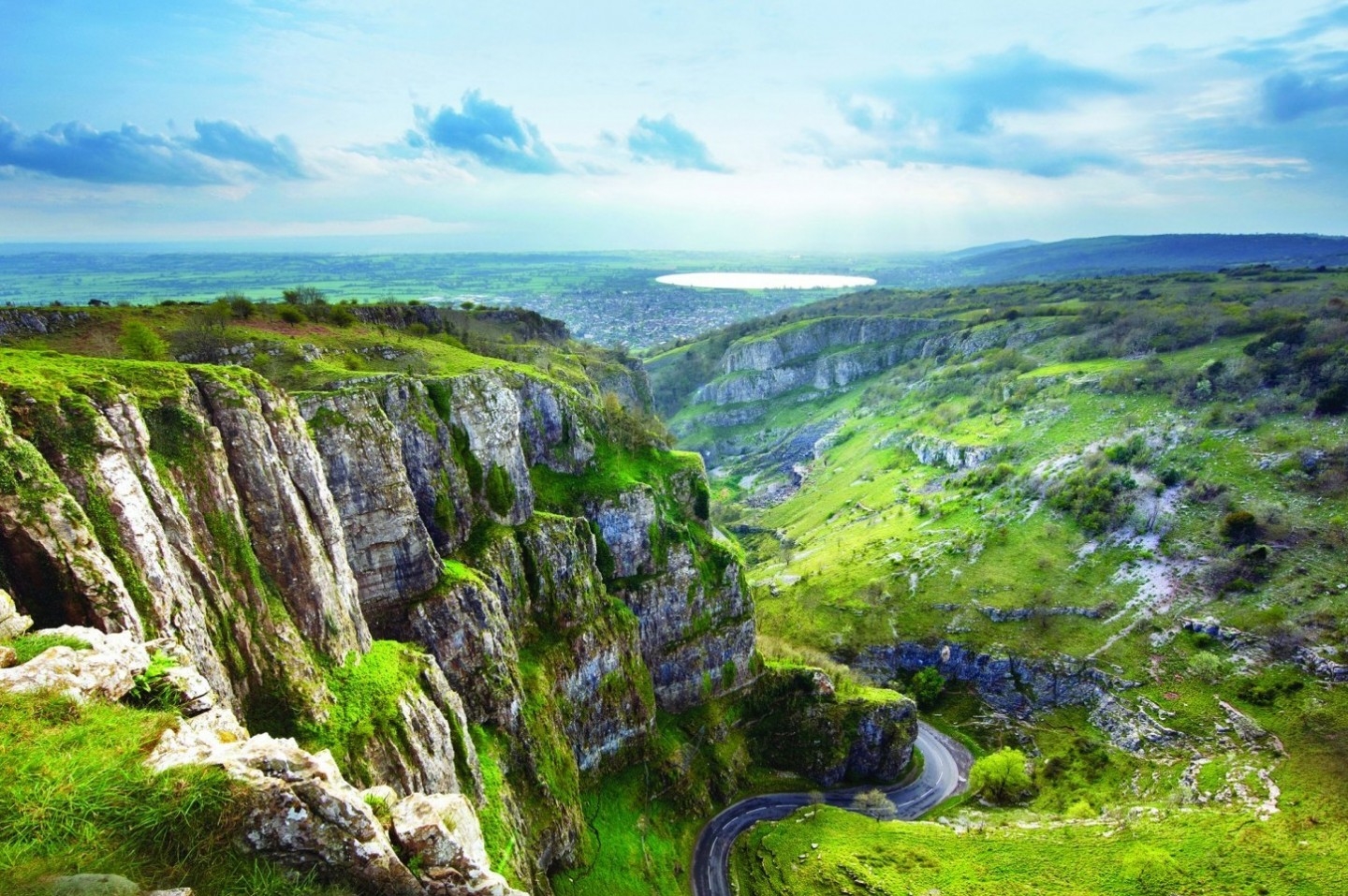 |
| Photo: Greatdays Travel Group |
Somerset's Cheddar Gorge is the perfect place to find evidence of Mother Nature's incredible power. The ravine, which is dramatic and strangely beautiful, was formed over a million years ago when meltwater floods helped carve out Britain's biggest gorge, which reaches a depth of 137 meters at its deepest.
Located in the equally picturesque Mendip Hills, the region offers a variety of thrilling hikes, rock climbing, and underground caverns. Of these, Gough's Cave is most well-known for housing Britain's oldest complete skeleton, which was discovered in 1903. This cave is also home to Cheddar Man, a man who is thought to be over 9,000 years old. Fans of facts, enjoy that.
9. Swallow Falls in Snowdonia National Park
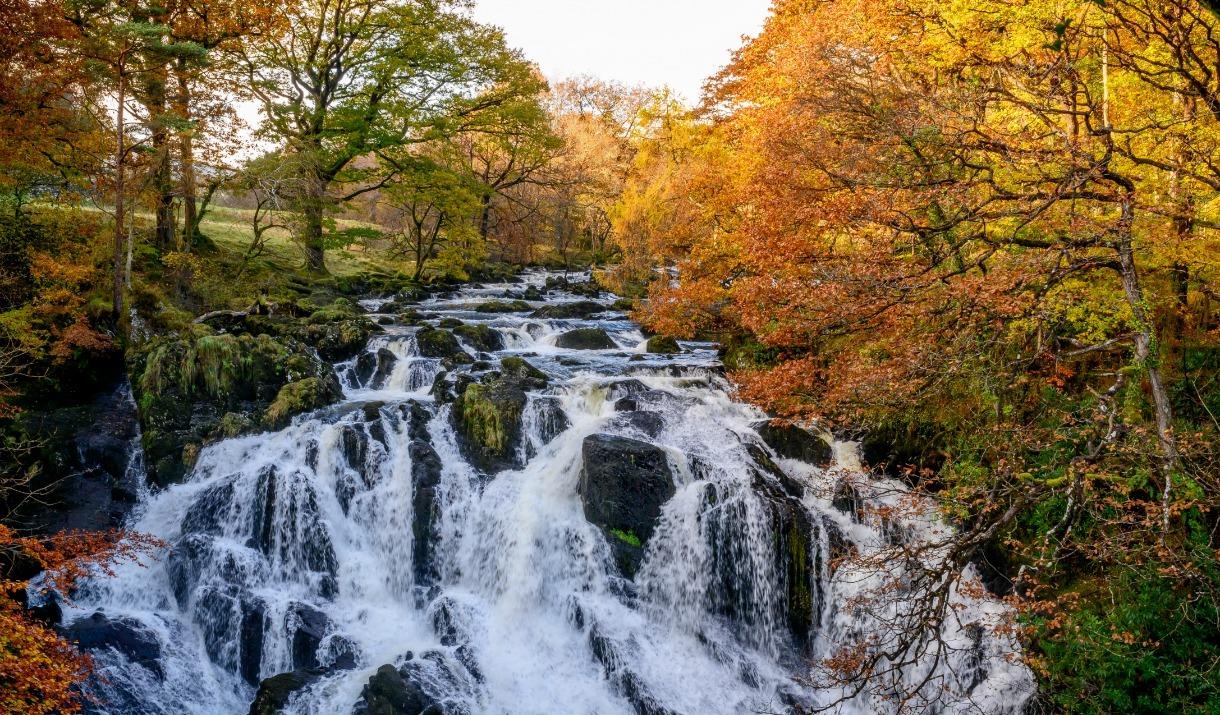 |
| Photo: Visit Conwy |
The tallest continuous waterfall in Wales is Swallow Falls, which is located near the A5 two miles west of the Snowdonia National Park center in Betwys-y-Coed. You have to walk alongside it to understand what that means.
The falls on the River (called Afon in Welsh) Llugwy are a winding, ever-widening series of cascades that thunder down into the river valley, layer upon layer, rather than a single, tall cascade.
The robust staircase that runs alongside Swallow Falls offers the best view of the falls. The riverside steps are a short, downhill stroll from the entrance, which is located across from the Swallow Falls Hotel on the A5. By using them, guests can ascend to the falls' summit or descend to its base, taking in the ever-changing scenery along the way. An even more difficult route is to walk along the river's north bank. And (surprisingly) some companies offer whitewater kayaking adventures down these falls for true daredevils.
10. The Isles of Scilly
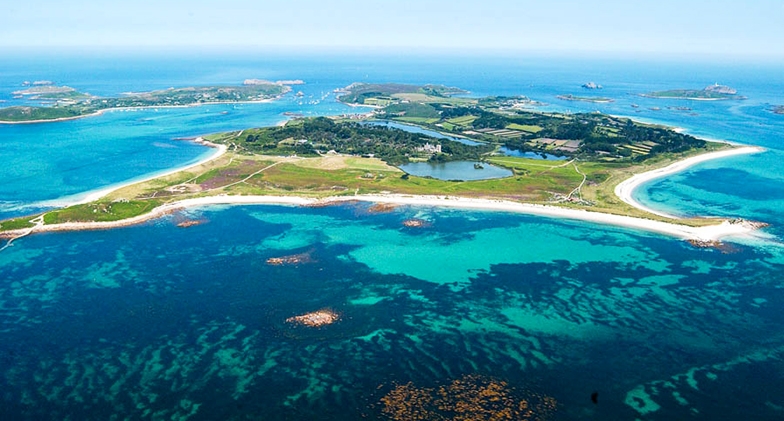 |
| Photo: Academy Travel |
Off the coast of Cornwall, the Isles of Scilly are a world unto themselves. This 140-odd island archipelago is still pristine, more in keeping with the vibrant, placid waters of the Pacific than the weather-whipped isles of Britain.
There aren't many chain restaurants or large hotels in this area. Rather, it provides a peaceful sanctuary apart from the bustle of life on the mainland.
The most southerly point in the United Kingdom is St Agnes, one of the islands, which is located four miles south of Lizard Point on the mainland.
11. Seven Sister Chalk Cliffs, East Sussex
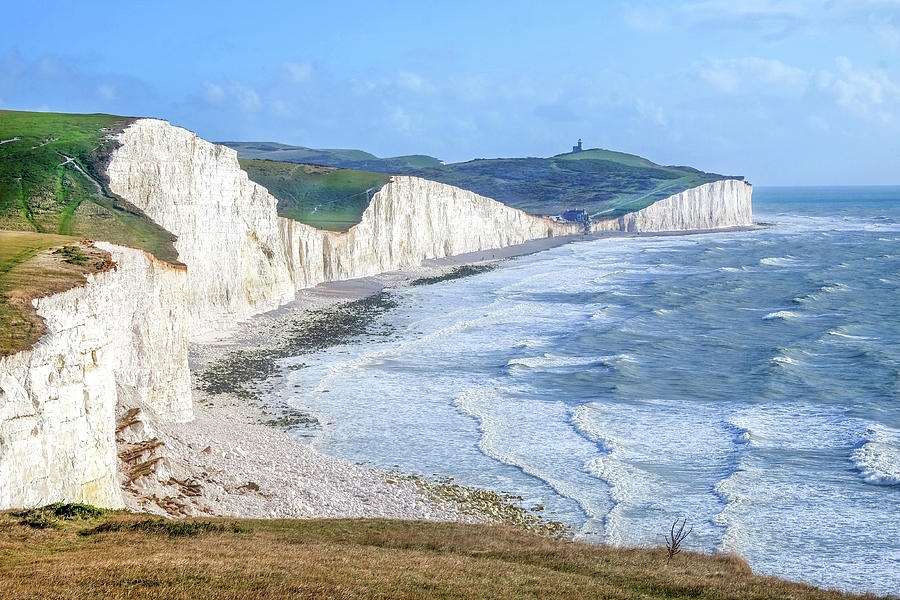 |
| Photo: Pixels |
Though the famous white cliffs of Dover draw most attention, the massive chalky walls of the Seven Sisters are far more impressive. This 4-mile stretch of sheer white rock roller coaster rolls along the Sussex shoreline, offering breathtaking views of the English Channel and the South Downs National Park's waters. The ride is especially breathtaking at the tall headland known as Beachy Head.
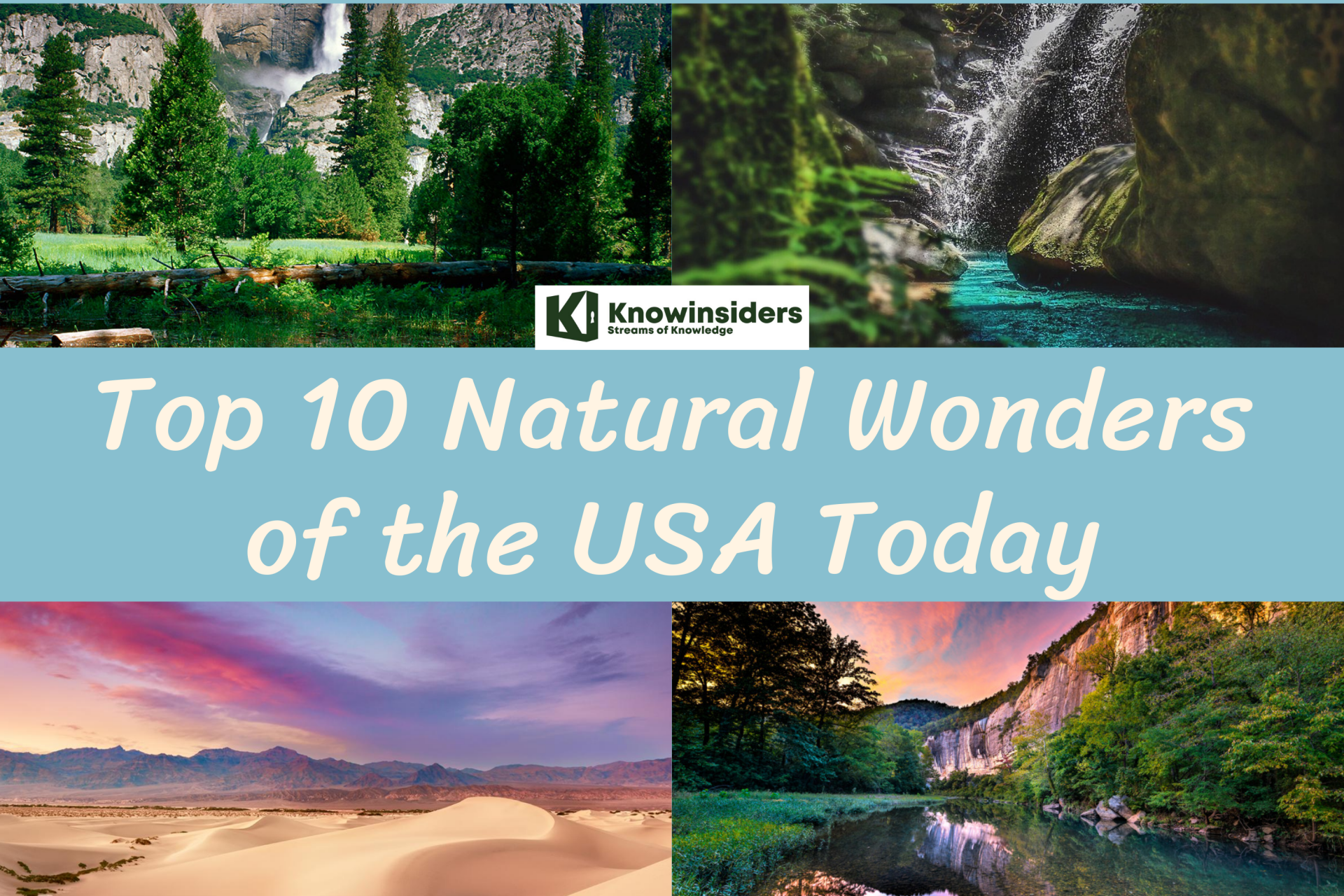 10 Natural Wonders In the United States Today 10 Natural Wonders In the United States Today Of all the things to do in America, there are few that rival exploring national parks and feats of Mother Nature’s engineering expertise. |
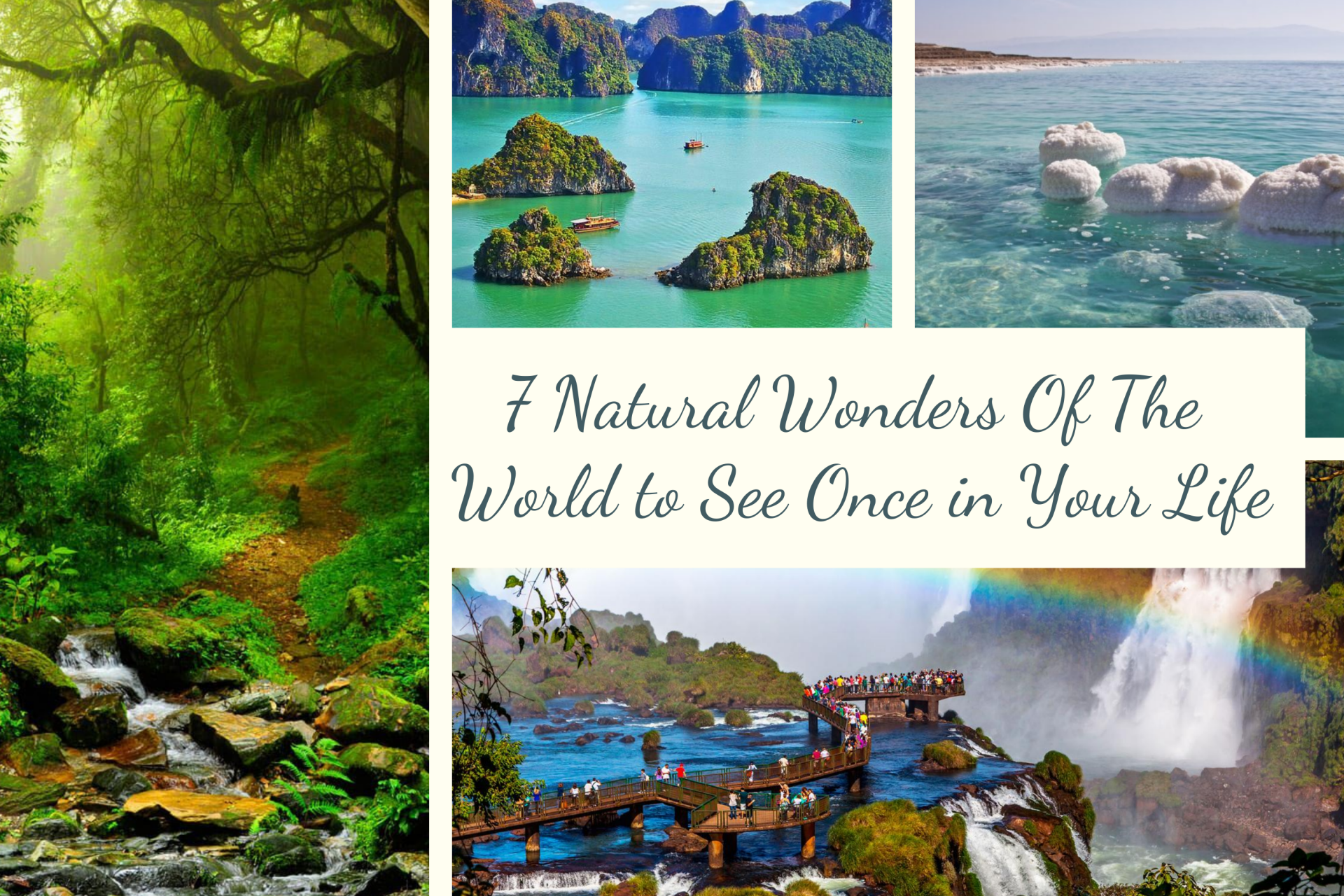 7 Natural Wonders Of The World to See Once in Your Life 7 Natural Wonders Of The World to See Once in Your Life The world is full of stunning scenery and some natural attractions hold such significance that they are recognized as the 7 Wonders of Nature. Check ... |
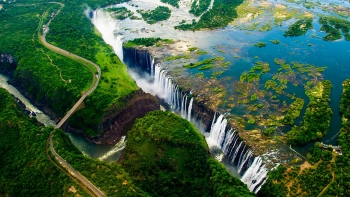 Discover The 7 Natural Wonders Of The World Discover The 7 Natural Wonders Of The World What are the 7 Natural Wonders of the World? Where are they? To have more detailed information, check out right below! |


